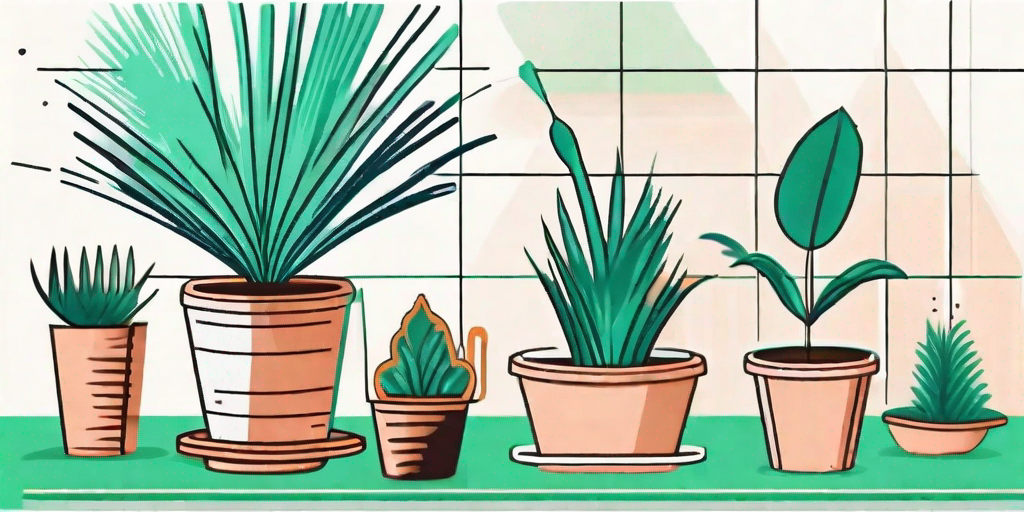
Sago palms, despite their name, are not really palms at all. They're cycads, ancient plants that have been around since the time of the dinosaurs. But don't let their prehistoric origins fool you. These plants are not as tough as T-Rex. They're actually quite delicate, especially when it comes to transplanting. But fear not, green-thumbed friends! With the right knowledge and a dash of patience, you too can become a sago palm transplanting maestro.
The Art of Transplanting Sago Palms
Transplanting a sago palm is not for the faint-hearted. It's a bit like performing a delicate surgery, but instead of a scalpel, you're wielding a spade. And instead of a surgical mask, you're probably wearing a sun hat. But the principles are the same: precision, care, and a little bit of sweat.
Before you start, it's important to understand why transplanting is necessary. Sago palms, like all plants, grow. And sometimes, they outgrow their current location. Maybe they're encroaching on the driveway, or perhaps they're just not getting enough sunlight. Whatever the reason, it's your job as a plant parent to ensure they get the best possible care.
Choosing the Right Time
Timing is everything when it comes to transplanting sago palms. These plants are not fans of change, and they need time to adjust. The best time to transplant is in the early spring, just before the growing season begins. This gives the plant plenty of time to establish itself before the harsh winter months.
But what if you can't wait until spring? Well, you're in luck. Sago palms are surprisingly resilient, and they can be transplanted at any time of the year. Just be aware that transplanting during the hot summer months can cause additional stress to the plant.
Preparing the New Location
Before you start digging, you need to prepare the new location. Sago palms prefer well-drained soil and plenty of sunlight. So, choose a spot that gets at least six hours of direct sunlight each day. And make sure the soil is well-draining. If it's not, consider adding some sand or perlite to improve drainage.
Once you've chosen the perfect spot, it's time to dig. The hole should be twice as wide and just as deep as the root ball of the sago palm. This gives the roots plenty of room to spread out and establish themselves.
The Transplanting Process
Now that you've prepared the new location, it's time to get down and dirty. Transplanting a sago palm is a multi-step process, but don't worry, we've broken it down for you.
- Water the sago palm: A day before the transplant, give your sago palm a good soak. This will help to reduce transplant shock.
- Dig around the root ball: Using a sharp spade, dig around the root ball of the sago palm. Be careful not to damage the roots.
- Lift the sago palm: Once you've loosened the soil, gently lift the sago palm out of the ground. If it's too heavy, consider asking a friend for help.
- Place the sago palm in the new hole: Carefully place the sago palm in the new hole. Make sure it's centered and sitting at the same depth as it was in its previous location.
- Backfill the hole: Fill in the hole with soil, making sure to firm it around the base of the sago palm.
- Water the sago palm: After transplanting, water the sago palm thoroughly. This will help to settle the soil and reduce transplant shock.
Post-Transplant Care
Transplanting a sago palm is only half the battle. The real challenge comes in the weeks and months after the transplant. But don't worry, we've got you covered.
Firstly, it's important to keep the soil moist, but not waterlogged. Sago palms don't like wet feet, so be careful not to overwater. A good rule of thumb is to water when the top inch of soil feels dry to the touch.
Secondly, keep an eye out for signs of transplant shock. This can include yellowing leaves, wilting, and slow growth. If you notice any of these symptoms, don't panic. It's perfectly normal for plants to experience some stress after being transplanted. Just keep providing consistent care, and your sago palm should bounce back in no time.
Frequently Asked Questions
Can I transplant a mature sago palm?
Yes, you can. However, keep in mind that mature sago palms are heavy and their roots are extensive. You may need to hire a professional or use machinery to move the plant safely.
How long does it take for a sago palm to recover from transplanting?
It can take anywhere from a few weeks to a few months for a sago palm to fully recover from transplanting. During this time, it's important to provide consistent care and monitor the plant for signs of stress.
Can I transplant a sago palm in winter?
While it's possible to transplant a sago palm in winter, it's not recommended. The cold temperatures can cause additional stress to the plant and slow down the recovery process.
Conclusion
Transplanting a sago palm may seem like a daunting task, but with the right knowledge and a dash of patience, it's entirely doable. Just remember to choose the right time, prepare the new location, follow the transplanting process, and provide post-transplant care. And most importantly, don't forget to enjoy the process. After all, gardening is not just about the destination, it's about the journey.
So, roll up your sleeves, grab your spade, and get ready to dive into the wonderful world of sago palm transplanting. Your prehistoric plant friends are counting on you!















